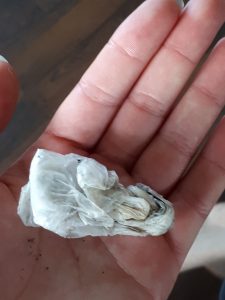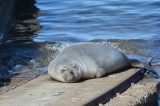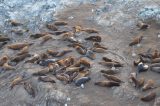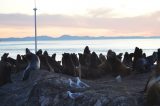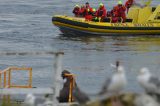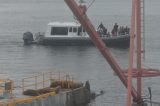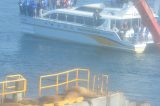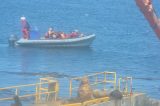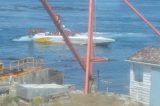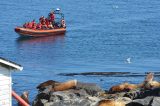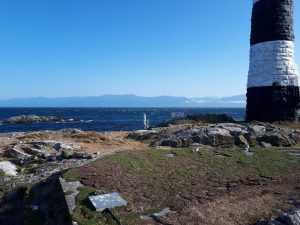Weather:
- Sky partially overcast, some light showers throughout the week
- Visibility 15 miles this morning, consistent throughout the day, some heavy fog a few days ago
- Wind 10-15 knots W
- Water ranging from calm to choppy with waves up to 1.5m over the last few days
Boats/Visitors:
- There’s been a lot going on over the past few days! Our apologies for the lapse in updates.
- On Monday, after a few weeks of planning, the Marine Mammal Rescue team from the Vancouver Aquarium came out to RR with support from DFO, to attempt disentanglement of the troubled sea lions we’ve been spotting. Stay tuned for an in-depth post detailing the days events with many photos and videos!
- We have been having minor trouble with the water supply/storage for our house here, but with a little investigation and some extra water deliveries it seems to be changing for the better!
- With water deliveries, there have been a handful of guests, notably including a guest speaker visiting the college to address students. It’s always nice to see some friendly faces!
Ecological:
- The sea lions continue to haul out in larger numbers, but it seems to be tapering off. Our electric fence lines are holding better as they learn (through trial and error) not to push through them.
- Young seagulls are naive to the danger sea lions pose – we have observed juvenile birds being trampled to death by a sea lion simply moving quickly to a different area of the rock. The birds who learn quickly live to fish another day…
- Over our time on Race Rocks we have been finding plastic/general garbage across the island compressed into a similar size and shape. After observing a seagull regurgitate a condiment packet (ex: rectangular, fast food style ketchup package), we believe this plastic to be consumed by seagulls on land or at sea, and then carried back to Race Rocks when the birds come to feed their young or rest. Regurgitating the foreign waste, perhaps to feed their offspring or out of discomfort, they deposit this human trash here.
- Here are some picture showing the plastic/garbage described above:
- We find compressed balls of trash like this, the size of what a seagull is capable of regurgitating
- A common find: cheese stick wrappers
- Another cheese stick wrapper
- On closer inspection, this appears to be a ball of dental floss tangled up with small vertebrae.
- A collection of trash we collected from around Race Rocks.
- We assume this came to the island in or with an animal, no starbucks out here!
- On the note of seagull diet, here are some picture of sea life remains found around RR which would seem to be left overs (and examples of what they should be eating) – talk about sea food from the source!
- (1) Some interesting spines!
- (2)
- A seastar that must have looked better than it tasted.
- Kelp crab leg
- A red rock crab shell
- Decaying sunstar
- Sea urchin shell
- Chiton remains
- (1) This appears to be the remains of a mossy chiton.
- (2)
- Cockle shell
- Chiton segments
- Oyster shell
- Mussel shell


